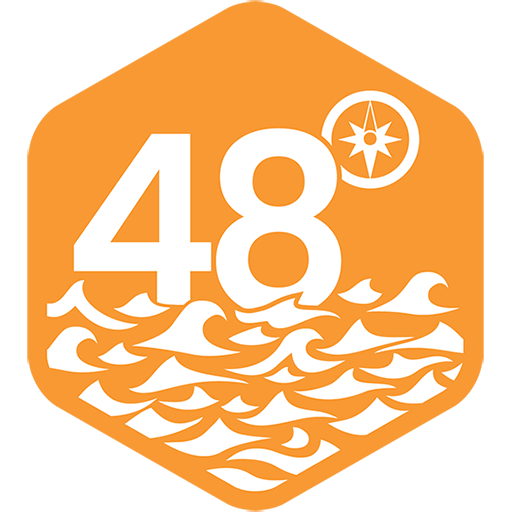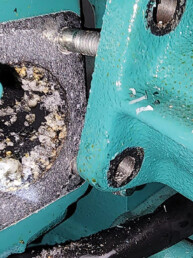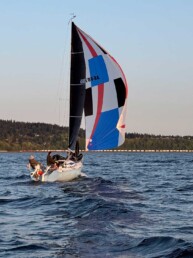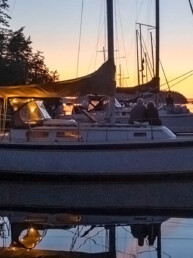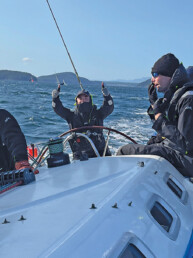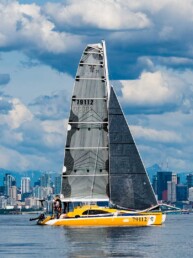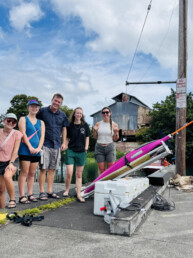In the past few weeks, I got to enjoy the ever-popular pair of September events: the Port Townsend Wooden Boat Festival and the Lake Union Boats Afloat Show. Each is a celebration of boats and dreams and life on the water in the Pacific Northwest, overflowing with good vibes and even better friends.
Of course, there are many ways that these events couldn’t be more different. One divergence that struck me this year is what a “small boat” is in each venue — a small boat at Wooden Boat Festival is diminutive compared to the average small boat at Boats Afloat. That doesn’t mean, however, that the Wooden Boat Festival definition is necessarily more accurate. The context matters.
Walk the docks of any new boat show, and a 27-foot boat will look adorably tiny nestled in among the giants. I’ve had recent conversations with sailboat dealers in which they revealed that it costs nearly as much to build a new small boat as it does a large one. Bringing a new boat into existence has many costs that occur just once, regardless of the size of the vessel — from the design work to outfitting the galley or electronics package, from the rudder assembly to the steering system. Along with numerous other economic factors (buyers’ desires is atop the list), new “small” boats are quite a bit bigger than they were a generation ago.
Meanwhile, much of the Wooden Boat Festival is an enthusiastic exercise in the opposite direction. Sure, you can hop aboard enormous old trawlers or century-old schooners, but whose eye isn’t drawn to the kiddos exploring the harbor on the miniature hand-driven paddlewheel boats? The festival is surprisingly full of new builds (amateur garage projects or products of the local wooden-boat-oriented schools or non-profits), many of which are calculably smaller than what’s available from conventional manufacturers. Their purposes may seem fundamentally different, but as 48° North readers have come to know through the adventurous “Close to the Water” columns of small boat cruiser, Bruce Bateau (page 18 this month), there are hardy, savvy, seasoned mariners out there cruising more days and miles on their less-than-20-foot vessels than many with much bigger platforms.
This is where the importance of perspective comes in. “Small” might be a measure of scale, but it’s really tied to what it means to the sailor. Small is often entangled with the prospect of accessibility. In the context of production boats, a 30-foot cruiser can be considered small — and fairly so — since modern boats of this size are often paired with simple, user-friendly systems to streamline handling and increase confidence for less experienced individuals. Small might be a similarly accessible attribute of a home-built wooden boat — something that will cost less in materials, time, shop space, or know-how — but still scratches the itch to build and gets someone on the water.
Conversely, a small boat might be more challenging in a delightfully Type-II way. Take the Race to Alaska fleet. As a rule, the smaller the boat, the harder it will be to get to Ketchikan. In this and many other contexts — camp-cruising, offshore cruising, or skiff racing — small is the opportunity for the refinement and display of hard-won skill, rigorous preparation, and ingenious efficiency.
Evidently, these big events leave me inspired in so many little ways. Celebrating all we share through the different avenues to experience boat life is a reminder that the appeal of boats, nature, leisure, and adventure are as varied as each day on the water.
I’ll see you on the water,
Joe Cline
Joe Cline has been the Managing Editor of 48° North since 2014. From his career to his volunteer leadership in the marine industry, from racing sailboats large and small to his discovery of Pacific Northwest cruising —Joe is as sail-smitten as they come. Joe and his wife, Kaylin, have welcomed a couple of beautiful kiddos in the last few years, and he is enjoying fatherhood while still finding time to make a little music and even occasionally go sailing.
